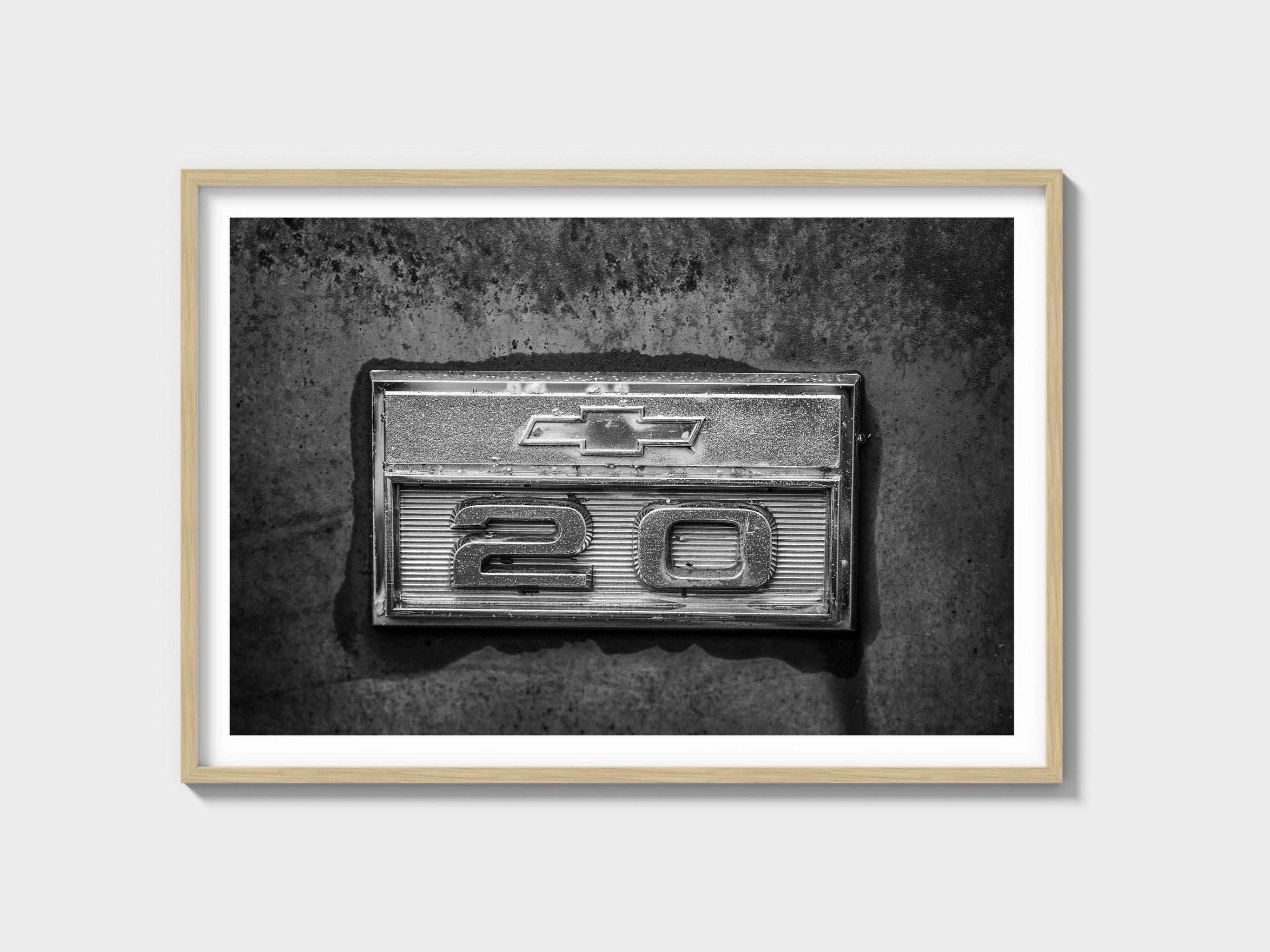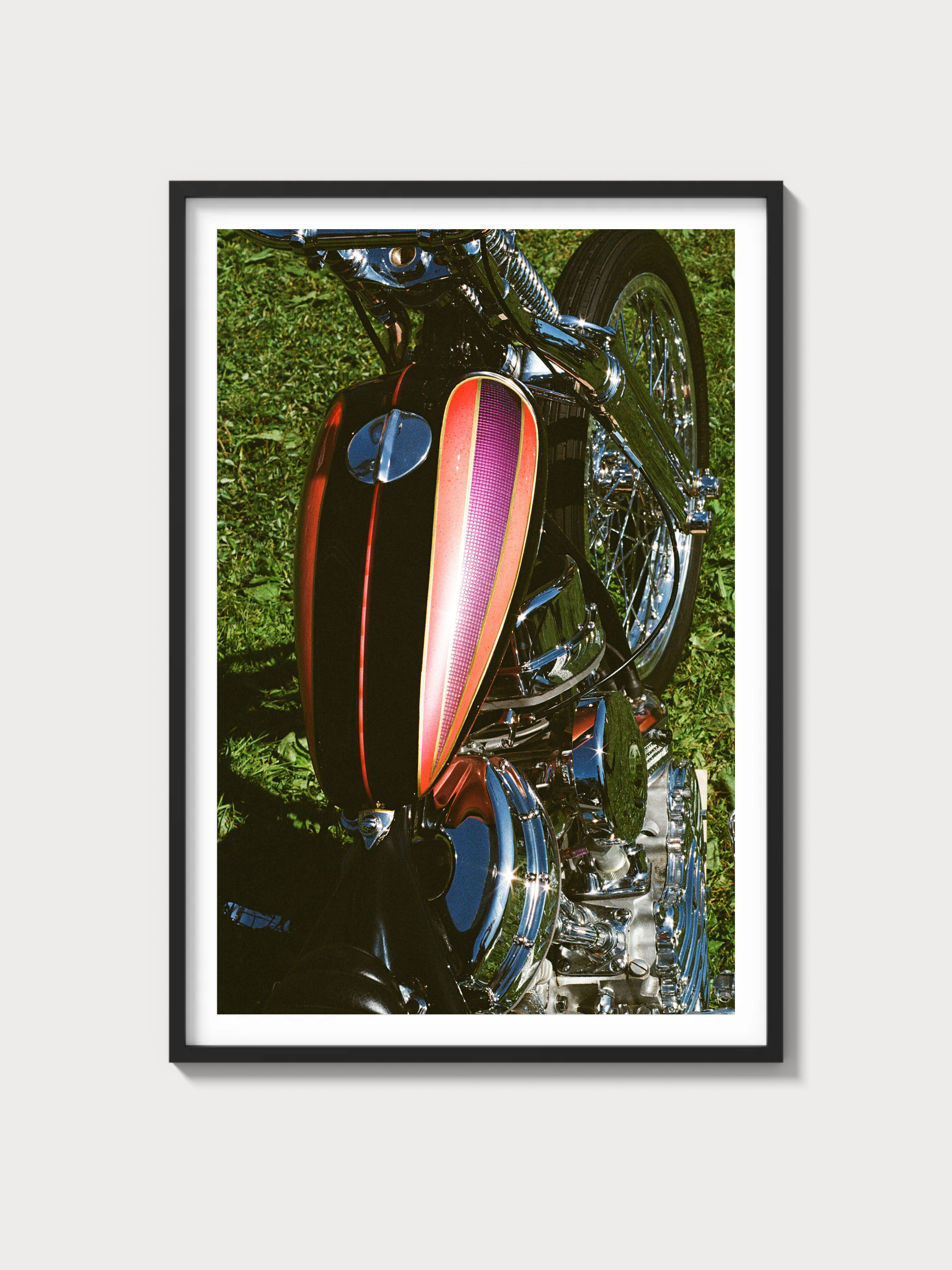2021–Present Chevrolet Tahoe Base (LS): The Fifth‑Gen Benchmark Full‑Size SUV
The fifth‑generation Chevrolet Tahoe arrived with a clean‑sheet chassis and packaging rethink that fundamentally changed how this full‑size SUV drives and works. The base LS—often simply called the “Tahoe Base” in fleet and retail ordering—anchors the lineup with the core mechanicals: GM’s T1 architecture, an independent rear suspension, the standard 5.3‑liter small‑block V8, and the 10‑speed automatic. It’s the least ornamented Tahoe, but it carries the engineering that made Gen 5 a step change in dynamics, space, and refinement.
Historical Context and Development Background
Chevrolet’s fifth‑generation Tahoe (internal T1XX platform) made its debut for the 2021 model year, sharing its underpinnings with the Suburban and GMC Yukon. The big news was the shift from a live rear axle to an independent multi‑link rear suspension. That decision, echoed across the GM full‑size SUV family, unlocked third‑row space, improved cargo volume, and—crucially for enthusiasts—reduced unsprung mass and sharpened ride control over choppy surfaces.
Corporate strategy placed the Tahoe as the volume leader and towing‑capable family hauler, while GMC positioned Yukon upmarket and Cadillac escalated luxury and tech in the Escalade. The competitor set remained familiar: Ford Expedition (aluminum‑intensive body and 3.5 EcoBoost V6), Nissan Armada (Y62 Patrol‑based V8), and Toyota Sequoia (the outgoing V8 model overlapped early on). In design terms, the Tahoe adopted a crisper frontal theme, broad daylight openings, and a horizontal light signature aimed at reducing visual mass despite a longer 120.9‑inch wheelbase compared with the prior K2 generation.
While motorsport wasn’t on the agenda, the platform’s durability was underscored by the related Tahoe Police Pursuit Vehicle (PPV) and Special Service Vehicle (SSV). Those fleet variants sit outside the retail LS but underscore the T1 chassis’ cooling, braking, and duty‑cycle headroom.
Engines and Technical Specifications
The LS is built around GM’s familiar small‑block architecture in direct‑injected, variable‑valve‑timed Ecotec3 form. A 3.0‑liter Duramax inline‑six turbodiesel was also available on LS in multiple model years of this generation, depending on market and equipment packages.
| Specification | 5.3L V8 Gas (L84) | 3.0L I6 Duramax Diesel (LM2) |
|---|---|---|
| Engine configuration | 90° V8, pushrod OHV, aluminum block/heads | Inline‑6 DOHC, aluminum block/heads |
| Displacement | 5,328 cc | 2,993 cc |
| Induction | Naturally aspirated | Single turbocharger with variable geometry |
| Horsepower | 355 hp @ 5,600 rpm | 277 hp @ 3,750 rpm |
| Torque | 383 lb‑ft @ 4,100 rpm | 460 lb‑ft @ 1,500–3,000 rpm |
| Redline | ~5,800 rpm | ~5,100 rpm |
| Fuel system | Direct injection, electronically controlled throttle | High‑pressure common‑rail direct injection |
| Compression ratio | 11.0:1 | 15.0:1 |
| Bore x stroke | 3.78 in x 3.62 in (96.0 mm x 92.0 mm) | 3.31 in x 3.54 in (84.0 mm x 90.0 mm) |
| Cylinder deactivation | Dynamic Fuel Management (up to 12 modes) | N/A |
| Transmission | Hydra‑Matic 10L80 10‑speed automatic | |
Chassis Basics
- T1 ladder‑frame with hydroformed rails and an independent multi‑link rear suspension replacing the previous live axle.
- Front: independent short/long arm (SLA) with coil‑over dampers and stabilizer bar.
- Rear: independent five‑link with coil springs and stabilizer bar (air springs available on upper trims, not LS).
- Steering: electric power‑assisted rack‑and‑pinion.
- Brakes: four‑wheel vented discs with ABS; stability and traction control standard.
Driving Experience and Handling Dynamics
The fifth‑gen Tahoe’s biggest dynamic improvement stems from the new rear suspension. The LS, even on conventional coils and passive dampers, exhibits better impact isolation and composure over mid‑corner bumps than its predecessor. Turn‑in is predictable, roll is well‑managed for the size, and there’s a clear reduction in head toss for third‑row occupants.
The 5.3L V8 remains the Tahoe’s character engine—smooth idle, a clean mid‑range, and crisp throttle response aided by short initial gearing in the 10‑speed. The transmission’s closely spaced ratios keep the small‑block in its torque window without hunting, and the calibration is notably more decisive under load than earlier six‑speed Tahoes. The available 3.0 Duramax trades top‑end thrust for a broad plateau of torque at low rpm; in real‑world use it feels relaxed and unhurried, especially at highway speeds where the 10‑speed settles the engine into a low‑rpm cruise.
Road feel through the electrically assisted rack is naturally filtered but consistent, with linear build‑up off center. On LS ride heights and 18‑inch tires, the primary ride is supple and free of the incessant fidget that used to define body‑on‑frame SUVs; secondary motions are better damped, a credit to the reduced unsprung mass and revised bushing rates. Brake pedal feel is reassuring, and fade resistance is up thanks to improved airflow and rotor sizing carried across the T1 program.
Performance Specifications
Factory top speed is electronically limited, and acceleration varies by drivetrain, tire, and option content. Independent instrumented testing of comparable fifth‑gen Tahoe LS configurations has returned the following representative results.
| Metric | 5.3L V8 (RWD) | 5.3L V8 (4WD) | 3.0L I6 Duramax (RWD) |
|---|---|---|---|
| 0–60 mph | ~7.3 s | ~7.5 s | ~8.0–8.5 s |
| Quarter‑mile | ~15.5–15.7 s @ ~90–92 mph | ~15.6–15.8 s @ ~89–91 mph | ~16.2–16.6 s @ ~84–86 mph |
| Top speed (limited) | ~112 mph | ~112 mph | ~112 mph |
| Curb weight | Approx. 5,473 lb | Approx. 5,845 lb | Approx. 5,5xx–5,7xx lb |
| Layout | Front‑engine; RWD or 4WD (Autotrac transfer case, depending on equipment) | ||
| Brakes | 4‑wheel vented discs; ABS; stability and traction control | ||
| Suspension | Front SLA coil‑over; rear independent multi‑link with coil springs | ||
| Gearbox | Hydra‑Matic 10L80 10‑speed automatic | ||
Note: Acceleration figures vary by tire/wheel package, drivetrain, altitude, and test methodology.
Variant Breakdown (Fifth‑Gen Tahoe Family)
While the LS is the “base” retail trim, the 5th‑gen Tahoe range spans multiple equipment levels. GM does not routinely publish trim‑level production counts; where production numbers are requested below, “Not published” reflects the absence of official public data.
| Trim | Positioning | Engines | Key Differences | Production numbers | Primary markets |
|---|---|---|---|---|---|
| LS (Base) | Entry; core mechanicals, minimal frills | 5.3L V8 standard; 3.0L Duramax available in many configurations | 18‑in wheels, cloth seating, foundational safety/infotainment; value‑focused spec | Not published | North America, Middle East |
| LT | Mid‑level comfort | 5.3L V8; 3.0L Duramax available | Leather, added driver aids, upgraded audio, more options access | Not published | North America, Middle East |
| RST | Sport‑appearance | 5.3L V8; 3.0L Duramax available (varies by year); 6.2L V8 available in some later years | Blackout trim, larger wheels/tires, unique fascias and badging | Not published | North America |
| Z71 | Off‑road oriented | 5.3L V8; (diesel availability varied by year/market) | Raised front clip, skid plates, all‑terrain tires, off‑road tuning, unique grille/badging | Not published | North America, Middle East |
| Premier | Luxury/tech step | 5.3L V8; 3.0L Duramax available | More driver aids, upgraded materials, chassis options (Magnetic Ride on certain builds) | Not published | North America |
| High Country | Flagship | 6.2L V8 standard on many builds; 3.0L Duramax available | Unique grille, premium trim, larger wheels, available air suspension | Not published | North America, Middle East |
Ownership Notes: Maintenance, Parts, and Serviceability
- Oil and filter: GM’s Oil Life Monitoring dictates change intervals; many owners see intervals around 7,500 miles under mixed use. Always follow the instrument’s recommendations and conditions in the owner’s manual.
- Transmission and driveline: The 10L80’s severe‑service fluid interval is typically earlier than normal service (e.g., towing or frequent stop‑and‑go). Transfer case and axle fluids should also follow severe‑service schedules when applicable.
- Spark plugs (5.3L gas): Long‑life plugs are typically serviced near 97,500 miles; inspect earlier in heavy use.
- Air filters: Engine air filter inspection commonly at 22,500 miles; replacement as needed based on dust/conditions. Cabin filter similar cadence.
- Coolant: Dex‑Cool extended‑life coolant; long service interval when tested and maintained properly.
- Diesel specifics (3.0L Duramax): DEF refills required; observe fuel filter intervals per manual and allow for periodic DPF regeneration through sustained highway running.
- Parts availability: Excellent; the T1 SUVs share components across Tahoe, Suburban, and Yukon, keeping wear items and crash parts readily sourced.
- Restoration/repair difficulty: Modern, densely packaged SUV with significant body‑on‑frame content—DIY routine service is approachable; deeper driveline or body electrical work benefits from factory‑level scan tools and procedures.
Known Issues and What to Watch
- 5.3L V8 lifter concerns: Some early fifth‑gen applications of the AFM/DFM lifters experienced collapse/failure incidents across GM trucks/SUVs. GM issued updated parts and procedures; verify service history and check for related TSBs by VIN.
- Infotainment and electrical updates: Early software/calibration updates addressed stability and feature behavior; ensure modules are current.
- Ride/trim noises: As with many body‑on‑frame SUVs, investigate tailgate, seat tracks, and load‑floor hardware for adjustments if squeaks present.
- Diesel aftertreatment: Short‑cycle urban use can hinder DPF regeneration; understand operating requirements if choosing the Duramax.
Cargo, Towing, and Practicality
- Interior volume: The IRS packaging yields generous space—up to roughly 122.9 cu ft maximum cargo volume, with meaningful third‑row legroom compared to the prior generation.
- Towing: When properly equipped with the Max Trailering Package, the 5.3L RWD Tahoe posts one of the line’s highest ratings; 4WD and diesel configurations are also competitive. Always verify the specific vehicle’s certification label for exact ratings.
Cultural Relevance and Market Perspective
The Tahoe is part of the American road’s visual vocabulary—ubiquitous in suburban driveways, at ball fields, and as municipal fleet vehicles. The fifth‑gen LS doesn’t aim for flash, but it benefits from the program’s high‑budget chassis work. On the enthusiast periphery, the Tahoe PPV’s existence burnishes the platform’s credibility for cooling, braking, and pursuit‑durability, even if the retail LS stays within civilian tuning.
Collector desirability for modern Tahoe LS models is pragmatic rather than speculative. These SUVs transact as used vehicles rather than blue‑chip collectibles; auction results track mileage, condition, options, and fleet versus private history. Higher‑content trims (Z71, High Country) and low‑mile diesels can command premiums, but the LS remains the value entry point for buyers seeking the core T1 hardware without the frills.
FAQs
Is the 5.3L V8 in the Tahoe LS reliable?
Overall, yes—GM’s small‑block architecture is proven. The main watch‑item is the AFM/DFM lifter story noted above. Verify maintenance, listen for misfires/ticks on cold start, and scan for codes. Updated lifter parts and calibrations addressed many early concerns.
How quick is a fifth‑gen Tahoe LS?
With the 5.3L V8, independent tests typically place 0–60 mph in the mid‑7‑second range depending on drivetrain and equipment. The diesel trails by roughly a second or more but feels strong in everyday torque‑led driving.
What’s the top speed?
Retail Tahoe models are electronically limited; for LS configurations, the limiter is commonly around 112 mph, tire‑dependent.
What are the towing numbers for the LS?
Properly configured with the Max Trailering Package, a 5.3L RWD LS is among the highest‑rated Tahoe variants for towing. Specific ratings vary by drivetrain and options; check the door‑jamb certification label and owner’s documentation for the exact figure applicable to a given vehicle.
Does the LS get Magnetic Ride Control or air suspension?
No. Those chassis technologies are found on upper trims and specific packages. The LS uses conventional coil springs and passive dampers, which contribute to lower running costs and straightforward service.
What are common service intervals?
Follow the Oil Life Monitoring for engine oil. Spark plugs on the 5.3L typically around 97,500 miles, coolant is long‑life Dex‑Cool, and driveline fluids have shorter intervals under severe service (towing, heavy urban use). Diesel models require DEF and periodic fuel filter service per the manual.
Are there any major recalls I should know about?
Like most high‑volume vehicles, the fifth‑gen Tahoe has had recall campaigns over its lifecycle. Use the VIN to check for open actions with the relevant regulatory database and a Chevrolet dealer.
Is the Duramax diesel worth it?
If you value low‑rpm torque and long‑range highway efficiency, the 3.0 Duramax is compelling. If you mostly run short trips or prefer a simpler emissions setup, the 5.3L gasoline V8 keeps ownership straightforward.
Why the Tahoe LS Matters
The fifth‑generation Tahoe is the first of the nameplate to truly shrug off the compromises of a live rear axle, and that change reverberates everywhere—from third‑row comfort to composure on a battered two‑lane. The LS is the purest read on that engineering: the same frame, the same IRS, the same 10‑speed, and the small‑block V8 that remains a model of accessible torque and low‑drama serviceability. For buyers who care more about the bones than the baubles, it’s the right Tahoe to study—and often, to own.

















































